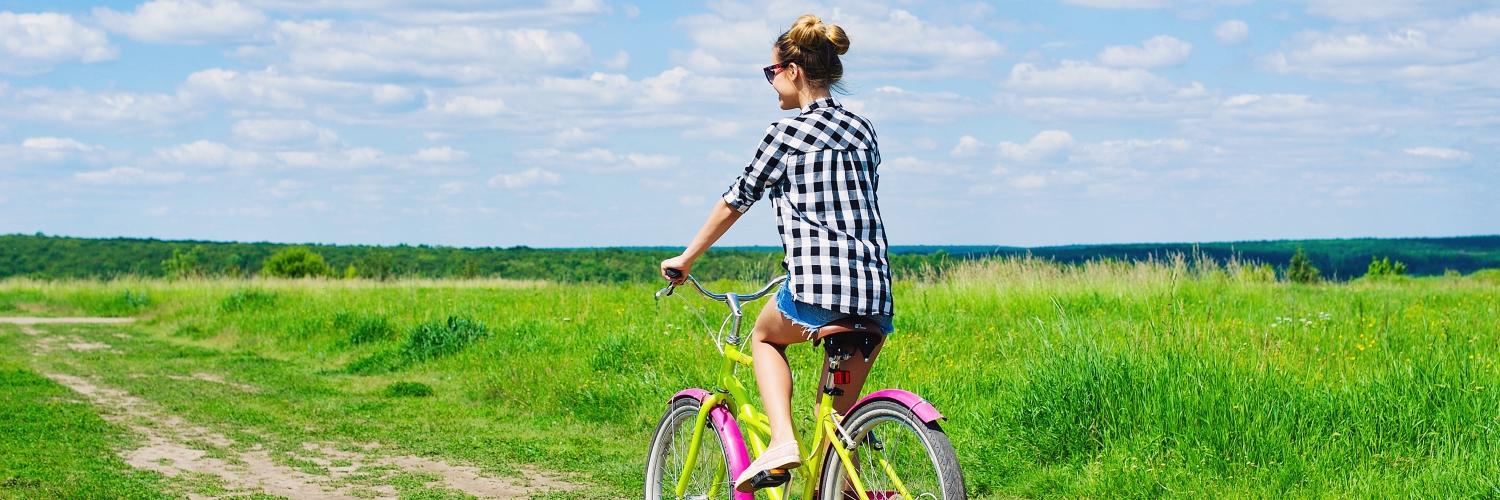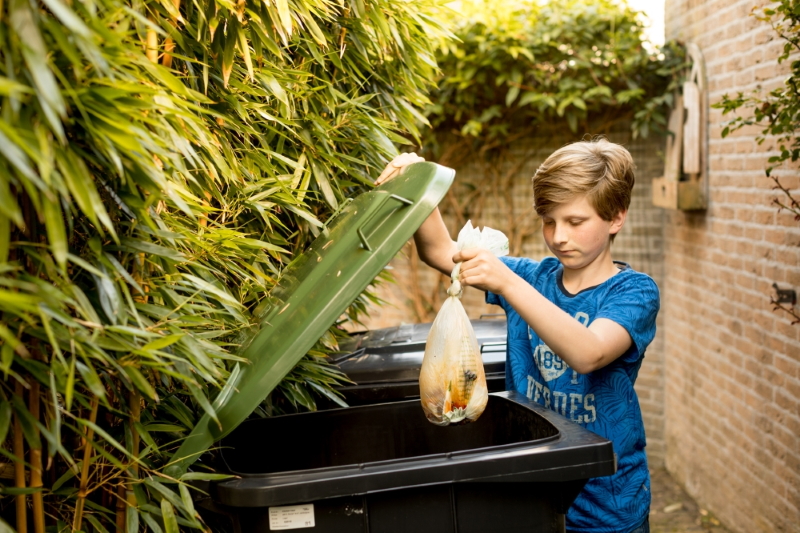
News
10 July 2018
Plastic: biobased or biodegradable?
Biodegradable plastic unsuitable for reuse
Bioplastics are on the rise. From meat trays, disposable cups and cutlery to magazine wrappers, a growing number of products are now made from bioplastics. The Dutch Waste Management Association is in favour of biobased raw materials, but is opposed to the use of biodegradable plastics in packaging. Composting or recycling these plastics are both problematic.
Bioplastics are here to stay and it is expected that their share in total plastic production will more than double over the next few years. Bioplastics come in all sorts and sizes, from films to meat trays and from PET bottles to coffee cups. There are two main types: biobased plastics and biodegradable plastics (see box). Biobased plastics are welcomed by the waste sector. 'We embrace the transition from fossil to biobased. Plastic made from biomass is a sustainable alternative to plastic made from oil,' says Tim Brethouwer, senior market analyst at Attero. The advantages of biobased plastics are lower greenhouse gas emissions, a lower demand for fossil resources and - essential for the circular economy - they are easy to recycle. 'Biobased plastic and fossil plastic contain exactly the same polymers. Biobased plastics can go through our existing sorting and recycling processes without any problem,' explains Eugene Rudolf of Van Scherpenzeel.

What is bioplastic?
The term 'bioplastic' refers to two main groups of plastics.
Biobased plastics are made from renewable natural raw materials, such as maize or potatoes. The polymers cannot be broken down by bacteria or fungi. Examples: bio-PET (polyethylene terephthalate) and bio-PE (polyethylene). Biobased plastics can be mechanically recycled.
Biodegradable plastics can be broken down by fungi and bacteria and are generally made from natural raw materials, such as maize, sugarcane and sugar beet. Examples: PLA (polylactic acid) and PHAs (polyhydroxyalkanoates). Biodegradable plastics that meet the European EN 13432 standard can be identified by the Seedling or OK Compost logos. This standard requires, among other things, that when treated in an industrial composting facility at least 95% of the material must be broken down within a period of 12 weeks.
Not in compost, please
The waste sector is less enthusiastic about biodegradable plastics, which are identifiable by the Seedling logo or the OK Compost logo. These logos say the plastic is compostable, but in practice it is not as simple as that. The idea that this material can simply be thrown away without causing litter is misleading. 'It takes many years for it to be broken down in nature. Most biodegradable plastics only decompose under special conditions in composting facilities, and then only partly or even not at all,' says Brethouwer.
Tim Brethouwer (Attero):
"Most biodegradable plastics hardly break down at all in composting facilities."
Residual waste stream
Despite the composting claim on the label, in the Netherlands biodegradable plastics do not end up in compost. So where do they go? Brethouwer: 'Into our residual waste stream. Only very thin bags are broken down. We sieve the rest out, either at the beginning or the end of the process. It takes twelve weeks in a composting plant for biodegradable plastics to break down, whereas the average composting time in Dutch facilities is two to four weeks - which is obviously too short. The residual stream goes to a waste-to-energy plant.'
No added value
So the net environmental gain is zero. But even if the material did end up in compost, it would still not add value. 'Biodegradable plastic breaks down to water and carbon, neither of which contributes to the organic matter content of the soil. Biodegradable plastic therefore adds nothing of value to soil.' Another hitch, according to Brethouwer, is that biodegradable plastic gives off the wrong signal. He is concerned about the risk of cross-contamination of waste. 'People may confuse biodegradable and non-biodegradable plastics, which can lead to more fossil plastic finding its way into the food and garden waste bin.' Meanwhile, Brethouwer sees more and more 'biodegradable' products appearing, such as plastic tablecloths and shoes, and even mobile phones. 'I certainly hope people aren't going to throw old sheets into the green bin!'

An exception: the food waste bin liner
As a rule the composting sector does not want biodegradable plastics in the green bin, but with one exception: the biodegradable food waste bin liner. Tim Brethouwer of Attero: 'Aids for temporarily storing food waste in the kitchen work well, such as paper bags, plastic worktop caddies or biodegradable plastic bags. These increase the amount of food waste we collect to be turned into useful products. Which is why, as composters, we say: just carry on collecting food waste in biodegradable bags.
Headache for recyclers
So should it go in the plastic or PMD (plastic, metal and drink packaging) bin? No, because plastic recyclers have little or nothing to gain from the material. 'For plastic recyclers biodegradable plastic is an unwanted headache,' says Rudolf of Van Scherpenzeel. 'At the moment sorting plants do not separate biodegradable plastics because volumes are too low,' he says. But it causes all sorts of problems in the recycling process. In the recycling of the hard plastics polypropylene (PP) and polyethylene (PE) it ends up in the residual stream. 'It costs the recyclers money and brings nothing in, and it also affects the quality of recycling. In PET plastic recycling it does find its way into the end product, but with adverse effects on quality, such as discoloration. A number of recyclers say they are seeing a decline in quality, due at least in part to biodegradable plastics.'
Eugene Rudolf (Van Scherpenzeel):
"For plastic recyclers biodegradable plastic is an unwanted headache."

Biobased plastic packaging is easily recycled
Divided opinions
Brethouwer and Rudolf are not alone. Sorters, composters and recyclers alike share their dislike of biodegradable plastics. It is important to note, though, that the sector's position is based on the current situation. Rudolf: 'Biodegradable plastic has no added value in current recycling practice, but the waste sector is always open to innovations. New developments in bioplastic production may lead us to revise our position.' Besides, this only applies to post-consumer waste. Brethouwer points out the environmental benefits that can be obtained from specific commercial waste streams of biodegradable plastics. 'Take the separate collection of plastic beakers at festivals, for example, or manufacturing wastes consisting of monostreams [a single type of waste - Ed.]. Biodegradability can also be of value in agriculture and horticulture.'
Geert Bergsma (CE Delft):
"Our conclusion for bioplastics is that the preferred route is recycling."
CE Delft corroborates DWMA's position
Last autumn CE Delft published an extensive study of bioplastics. Its conclusions corroborate the DWMA's position, says Geert Bergsma, manager of supply chain analysis at CE Delft. 'Our conclusion is that the preferred end-of-life treatment of bioplastics is recycling. That has the biggest environmental benefit. Recycling is definitely the favoured route.' Bergsma investigated all types of bioplastics, their environmental performance and the end-of-life treatment options. He says the following about biodegradable plastics: 'In our report we take a firm view. Only use biodegradable plastics when they really do serve a useful purpose. This includes things like agricultural plastic film, which tears occasionally and the bits can then degrade naturally in the soil. That makes sense. Also, food waste bin liners help to increase the volume of separately collected food and garden waste. Biodegradable plastic can also be a sensible option for plant pots: you just bury them and after a time they will simply disappear.' Bergsma thinks biodegradable plastic makes no sense for most consumer packaging, such as magazine wrappers. 'Instead, use a recyclable biobased plastic that people can put in the plastic recycling bin. This is less confusing. Plastic belongs with plastic. Or better still, don't use a wrapper at all.'
CE Delft carried out the study for the Ministry of Infrastructure and the Environment (now Infrastructure and Water Management). 'There were doubts within the ministry about the best route: should bioplastics be circular - i.e. recyclable - or biodegradable? Our advice is to go for circular, for recycling, and meet the remaining demand for fossil plastics by replacing these with biobased plastics.' The government has also concluded that composting bioplastics in itself has no added value within the circular economy. The Cabinet is currently working on a strategy document on the use of biobased plastics.
Author
Addo van der Eijk - @copyright
Translation
Derek Middleton
